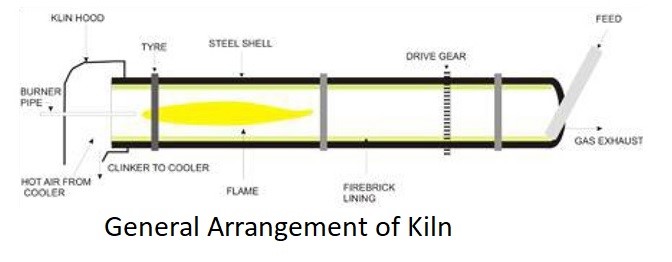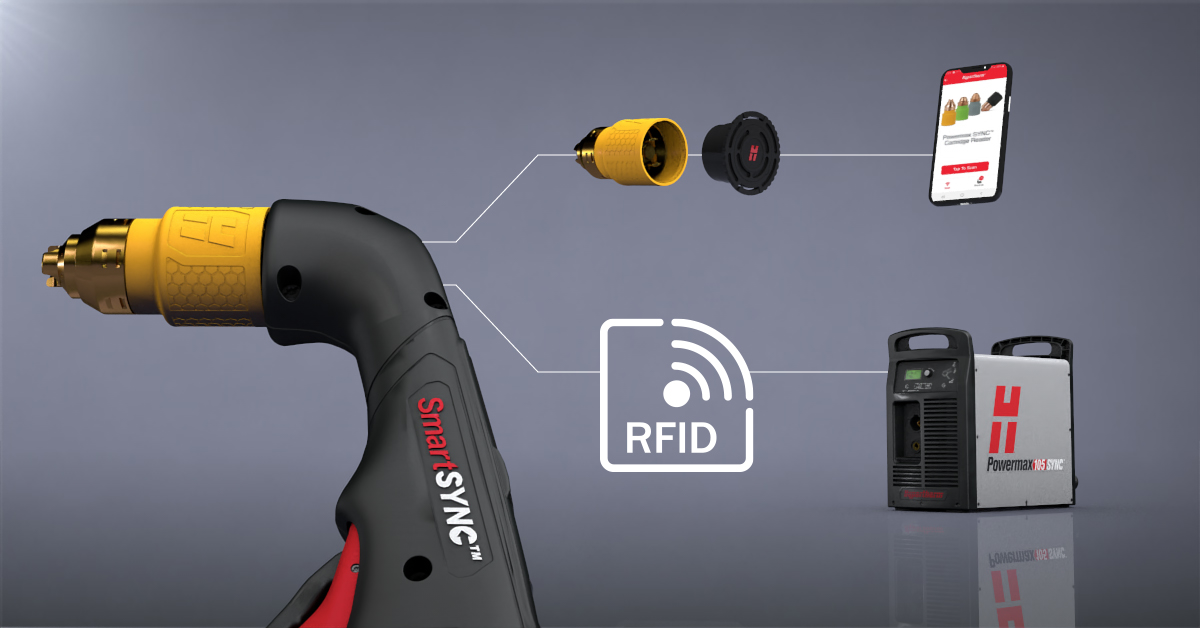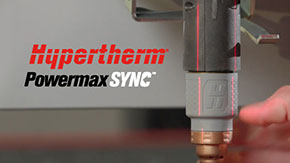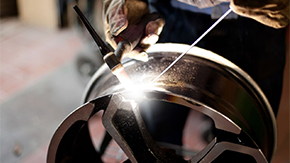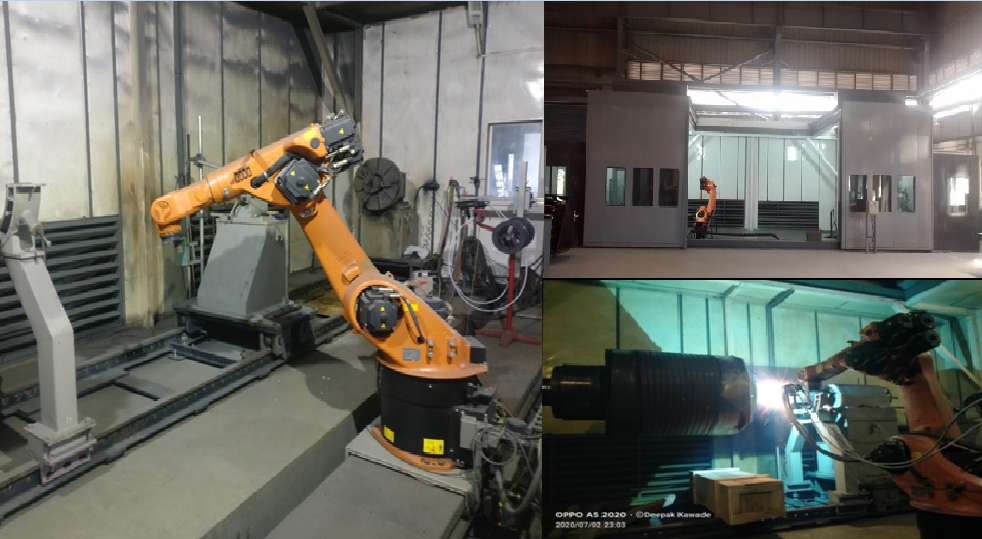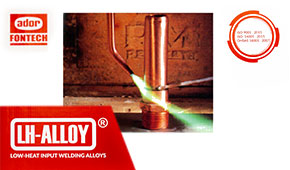Corrosion and Cracks in Kiln Shells – Repair Solutions from ADFL
Table of Contents
- Hot Spot & Red Spot
Cement Industry uses Rotary Kiln for Pyro-processing the raw mixture of finely crushed limestone (calcium carbonate + silica-bearing minerals) to manufacture cement. Kiln or kiln shell is at the heart of the cement-making process; its capacity, usually defines the capacity of the cement plant.
The Rotary Kiln consists of a tube made up of structural rolled steel material and lined with firebrick (or) castables. This kiln shell/tube slopes (1⁰to 4⁰) from one end to another, and slowly rotates on its axis at between 30 & 250 revolutions per hour depending on the plant. Raw mix is fed in the upper end and the rotation of the kiln causes the mix to move gradually to the other end of the kiln shell. At the other end to the lower part of the kiln, the burner pipe system provides a concentric flame. The raw mix moves under the flame and reaches its peak temperature before it drops out of the kiln into the cooler. In principle, the air drawn through the cooler flows into the kiln causing combustion of the fuel fed through burner pipe ensuring intense heat right across the kiln shell taking the temperature close to 1450⁰ C turning the raw mix into fully calcinated clinker.
This Kiln shell made of structural rolled steel has a tensile strength between 50,000 to 80,000 PSI at room temperature but once it goes beyond 200 degrees. The tensile strength drops rapidly and at around 430 degrees, studies have noted a strength loss of close to 50% from its original strength. Because of its continuous working condition at this high temperature along with corrosion caused by castables (which also cause thickness reduction in Rotary kiln or Kiln shell). After a period, fatigue develops in the kiln shell lining and with any small damage to the firebrick or castable it has a temperature attack or thermal shock in the kiln shell causing hot spots and red spots leading to cracks.
Hot Spot & Red Spot
Hot spot is an isolated area in the Rotary kiln where the Kiln shell temperature is close to 550 deg. It is not visible to to the naked eye but can be deducted by Shell scanner, also known as portable Infra-red pyrometer. Red spot is an area visible at night, indicating that the temperature is above 550 degrees. In layman’s terms, hot spot is like a warning sign that action is needed but red spot means immediate action with stoppage of Rotary kiln. Every hot spot eventually becomes a red spot-causing cracks in kiln shell. With today’s improved technology the shell temperature is monitored continuously with computer-aided sensors. At times kiln is stopped on deduction of a hot spot on further inspection cracks are noticed in the Kiln shell for immediate action
Generally, cracks that are perpendicular to rotary kiln and not of significant lengths and depth are repaired by welding. If the cracks are circumferential in nature, the particular portion is cut and removed & a new shell of the same length is inserted, aligned & welded. Also, kiln shell replacement is the preferred method in most cases of the red spot.
ADFL holds pre-eminence in both these types of repair – kiln shell repairs & kiln shell replacement. Further, we also offer a wear protection solution for high-temperature corrosion
- We offer customized solutions for the repair of rotary kiln shell cracks with a combination of our LH 1105 & LH 521 alloys. We have credentials in attending a number of these kinds of breakdowns shutdowns
- We are the only solution provider to offer automated kiln shell joining using the SAW process for kiln shell replacement jobs. By using an automated SAW process, we can complete a single joint in 24-36 hours – offering the highest productivity with X-ray quality welding
- We also supply kiln shells & cowl shells of the required dimensions. This is a fabricated shell with single SAW joints, making it a value proposition to the industry.
- We also have a Wear Protection solution for Rotary Kilns against high-temperature corrosion, Zircoat-M, a high-temperature coating, can be applied to a kiln shell’s inside portion before fixing castables to totally eliminate corrosion problems in kilns.
With such customized solutions for cement plant maintenance, repair, and refurbishment requirements, Ador Fontech Limited remains the first name to recall for customers across India, as we stay true to our motto of Life Enhancement of industrial components in every sphere possible.
Reclaim, Do not Replace


